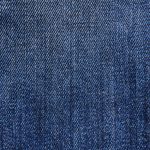If you’re wondering what makes a fabric high-quality, look no further. This article will delve into the 14 key parameters that determine fabric quality.
From fiber content and yarn quality to fabric construction and thread count, each aspect plays a vital role.
You’ll learn about weight, density, and breathability, as well as the impact of dyeing, printing methods, and finishing treatments.
Plus, we’ll touch on the environmental factors that contribute to the overall quality of fabrics.
Get ready to unravel the secrets of fabric quality!
Table of Contents
Fiber Content
To assess the fabric quality, you should evaluate the fiber content, which plays a crucial role in determining its overall performance. The fiber type used in fabric production greatly affects its durability, comfort, and appearance. Different fibers have distinct properties that contribute to the fabric’s overall performance.
For instance, natural fibers like cotton and silk are known for their breathability and softness, making them suitable for clothing items. On the other hand, synthetic fibers such as polyester and nylon are known for their strength and wrinkle resistance, making them ideal for durable materials like upholstery and outdoor gear.
The choice of fiber type also affects other important fabric performance factors, including moisture-wicking capabilities, thermal insulation, and abrasion resistance. Understanding the fiber content of a fabric allows you to make informed decisions about its suitability for a particular application.
Yarn Quality
Now let’s talk about the important points when it comes to yarn quality.
First, you need to consider the strength of the yarn, as it determines the durability of the fabric.
Next, the composition of the yarn plays a crucial role in how the fabric feels and performs.
Lastly, the twist of the yarn affects the overall appearance and stability of the fabric.
Yarn Strength Importance
Ensure that your yarn possesses sufficient strength to guarantee high-quality fabric. Yarn strength is a crucial factor in determining the durability and longevity of the fabric it produces. To assess yarn strength, various testing methods are employed, such as tensile testing and abrasion resistance testing. These tests measure the yarn’s ability to withstand tension and friction, respectively. By evaluating the strength of the yarn, manufacturers can ensure that the fabric produced will be able to withstand wear and tear, maintaining its appearance and performance over time. A strong yarn also contributes to the overall quality of the fabric, enhancing its ability to retain shape, resist pilling, and withstand washing and drying processes. Therefore, prioritizing yarn strength is essential in achieving high-quality, long-lasting fabrics.
| Testing Methods | Description |
|---|---|
| Tensile Testing | Measures the maximum amount of force a yarn can withstand before breaking. |
| Abrasion Resistance Testing | Evaluates the yarn’s ability to resist wear and tear caused by rubbing or friction. |
| Other Testing Methods | There are various other tests available, such as yarn twist testing and yarn elongation testing, which assess different aspects of yarn strength. |
Please refer to the table above for a comprehensive overview of yarn strength testing methods.
Yarn Composition Effects
Evaluate the impact of yarn composition on the quality of your fabric by considering its fiber content and structure.
The yarn composition refers to the type of fibers used in the yarn, such as cotton, polyester, or silk, as well as the structure of the yarn itself, including its twist and ply.
The benefits of choosing the right yarn composition are numerous. For example, using high-quality natural fibers like cotton or silk can result in a fabric that’s soft, breathable, and comfortable to wear.
On the other hand, there are also drawbacks to certain yarn compositions. Synthetic fibers, like polyester, may not be as breathable and can cause discomfort during hot weather. Additionally, some yarn compositions may be more prone to pilling or stretching over time.
Therefore, understanding the effects of yarn composition is essential in achieving the desired fabric quality.
Yarn Twist Significance
Understanding the impact of yarn twist on fabric quality is crucial when determining the overall performance and characteristics of your fabric. The yarn twist tension and direction play a significant role in the final product. Here are three key points to consider:
-
Yarn Twist Tension: The tension applied during the twisting process affects the strength and durability of the yarn. Higher tension results in a tighter twist, creating a stronger yarn with better resistance to wear and tear.
-
Yarn Twist Direction: The direction of the twist, either S or Z, influences the fabric’s appearance and behavior. Fabrics with S-twist yarns have a smoother surface, while Z-twist yarns create more texture.
-
Balance: Achieving the right balance between twist tension and direction is crucial for optimal fabric performance. Imbalances can lead to issues like bias growth, puckering, or uneven dye absorption.
Fabric Construction
To accurately assess the quality of a fabric, you need to examine its construction. Fabric construction refers to the way in which the individual yarns are arranged and intertwined to create the fabric. This plays a crucial role in determining the fabric’s durability and breathability.
When it comes to fabric durability, the construction method is of utmost importance. Fabrics with a tight weave or knit tend to be more durable as they’re less prone to tearing or fraying. The interlocking of yarns in a strong and cohesive manner provides strength and resilience to the fabric, making it last longer.
On the other hand, fabric breathability is determined by the openness of the construction. Fabrics with a looser weave or knit allow for better air circulation, enhancing breathability. This is particularly important in garments that are worn for extended periods or in warm climates, as it helps to prevent overheating and moisture buildup.
Thread Count
When it comes to fabric quality, thread count plays a crucial role. Understanding the importance of thread count, the factors that affect it, and the optimal thread count for different fabrics is essential.
Importance of Thread Count
You can determine the fabric quality by evaluating the thread count’s significance. The thread count refers to the number of threads woven into one square inch of fabric.
Here are some key points to help you understand the importance of thread count:
-
The importance of fabric weave:
-
The fabric weave determines the overall quality and durability of the fabric.
-
A tight and closely woven fabric weave results in a higher thread count, indicating a higher quality fabric.
-
A loose or open weave may lead to lower thread count, indicating a lower quality fabric.
-
The impact of thread quality:
-
Higher thread count generally means finer and stronger threads, resulting in a softer and more durable fabric.
-
Lower thread count may result in coarser threads, making the fabric less soft and prone to wear and tear.
-
Overall fabric quality:
-
A higher thread count usually indicates a higher quality fabric with better comfort, breathability, and longevity.
-
However, it’s important to consider other factors such as fiber type and fabric finish in determining the fabric’s overall quality.
Understanding the significance of thread count can help you make informed decisions when choosing fabrics for your various needs.
Factors Affecting Thread Count
Considering the impact of various factors, you can understand how thread count is affected. One of the key factors that affects thread count is the yarn count. Yarn count refers to the thickness of the yarn used in the fabric. Generally, fabrics with a higher yarn count have a higher thread count, resulting in a tighter weave and a smoother feel. This leads to increased fabric softness, which is another factor influencing thread count. Fabrics with a higher thread count tend to be softer and more luxurious to the touch. To further illustrate the relationship between yarn count, fabric softness, and thread count, refer to the table below:
| Yarn Count | Fabric Softness | Thread Count |
|---|---|---|
| High | High | High |
| Low | Low | Low |
| Medium | Medium | Medium |
Optimal Thread Count
To determine the optimal thread count for fabric quality, take into account the relationship between yarn count, fabric softness, and thread count.
The optimal thread count plays a crucial role in determining the overall quality and performance of the fabric.
Here are some key points to consider:
-
Yarn Count: The thickness of the yarn used in the fabric affects the thread count. Finer yarn requires a higher thread count for a smoother and more durable fabric.
-
Fabric Softness: A higher thread count generally results in a softer fabric. However, it’s important to strike a balance as excessively high thread counts can compromise the fabric’s breathability and comfort.
-
Thread Count Importance: Optimal thread count ensures better fabric strength, longevity, and resistance to wear and tear. It also contributes to the fabric’s ability to retain color and resist wrinkles.
Weight and Density
Evaluating the weight and density of fabric is crucial in determining its quality. When it comes to fabric thickness, heavier fabrics tend to be more durable and of higher quality. A thicker fabric is less likely to tear or wear out quickly, making it ideal for garments that need to withstand frequent use or rough handling. On the other hand, lighter fabrics can be more delicate and prone to damage.
Density, on the other hand, refers to how tightly woven the fabric is. A tightly woven fabric has a higher density and is generally considered to be of higher quality. It’s less likely to stretch, sag, or lose its shape over time. Fabrics with a looser weave may be more comfortable and breathable, but they might also be less durable.
In addition to fabric thickness and density, fabric texture also plays a role in determining quality. A smooth and consistent texture is often preferred, as it indicates a well-made fabric with even yarns and tight weaving. On the other hand, fabrics with an uneven texture or visible irregularities may be of lower quality and less durable.
To ensure you’re purchasing a high-quality fabric, pay attention to its weight, density, and texture. These factors can give you valuable insights into the fabric’s durability and overall quality.
Colorfastness
When it comes to evaluating fabric quality, colorfastness plays a crucial role. You need to consider the dye absorption rate, which determines how well the fabric retains its color over time.
Fade resistance testing is also important to ensure that the fabric maintains its vibrancy even after exposure to sunlight or washing.
Additionally, preventing color bleeding is essential to prevent the transfer of color from one fabric to another.
Dye Absorption Rate
Assessing the dye absorption rate is crucial in determining the colorfastness of a fabric. The rate at which a fabric absorbs dye affects its ability to retain color over time.
To help you understand this concept better, here are some key points to consider:
-
Dye absorption control:
-
Controlling the dye absorption rate during the dyeing process is essential to achieve consistent and even coloration.
-
Factors such as pH levels, temperature, and dye concentration can influence the absorption rate.
-
Proper control ensures that the fabric absorbs the dye evenly, resulting in long-lasting colorfastness.
-
Dyeing techniques:
-
Different dyeing techniques, such as immersion dyeing, pad dyeing, and printing, can influence the dye absorption rate.
-
Each technique has its own set of parameters and conditions that affect how the fabric absorbs the dye.
-
Understanding the appropriate dyeing technique for a particular fabric can help optimize the dye absorption rate and enhance colorfastness.
Fade Resistance Testing
To determine the fade resistance of a fabric, you need to conduct colorfastness tests. Fade resistance testing is crucial in determining how well a fabric maintains its color over time.
Colorfastness testing evaluates the fabric’s ability to resist fading when exposed to various conditions, such as sunlight, washing, and rubbing. These tests help determine the fabric’s durability and longevity, as fading can significantly impact the appearance and quality of a fabric.
During colorfastness testing, the fabric is subjected to simulated real-life conditions to assess its resistance to fading. The results of these tests provide valuable information to manufacturers, designers, and consumers, allowing them to make informed decisions about the fabric’s suitability for specific applications.
Ensuring that a fabric has good fade resistance is essential for maintaining its aesthetic appeal and overall quality.
Color Bleeding Prevention
To prevent color bleeding and maintain the fabric’s quality, it’s important to understand the concept of colorfastness. Color bleeding occurs when the dye or pigment in the fabric transfers to other materials or fades over time. To ensure colorfastness, manufacturers use various bleeding prevention techniques and conduct colorfastness testing.
Here are three important factors to consider:
-
Choice of dyes: Using high-quality, colorfast dyes can significantly reduce the risk of color bleeding. Manufacturers should opt for dyes that are specifically designed to be resistant to bleeding.
-
Pre-treatment processes: Proper pre-treatment processes, such as scouring and bleaching, help to remove excess dye and improve the fabric’s ability to retain color.
-
Finishing treatments: Applying finishing treatments, such as resin or chemical treatments, can enhance colorfastness by creating a protective barrier on the fabric.
Pilling Resistance
Check the fabric’s pilling resistance to ensure durability and longevity. Pilling is a common issue that can affect the overall appearance and feel of the fabric. It refers to the formation of small, fuzzy balls on the surface of the fabric, caused by friction and abrasion. To prevent pilling and maintain the fabric’s quality, follow proper fabric care practices.
One key parameter to consider is the fabric’s fiber content. Natural fibers like cotton and silk tend to be more prone to pilling compared to synthetic fibers such as polyester. The fabric’s weave can also impact its pilling resistance. Tighter weaves, like twill or satin, are less likely to pill compared to looser weaves like plain or jersey.
Regular maintenance and care can also help minimize pilling. It’s recommended to wash pillowcases inside out, using a gentle cycle and mild detergent. Avoid using harsh chemicals or fabric softeners, as they can weaken the fibers and increase pilling. Additionally, air-drying or using a low heat setting in the dryer can help preserve the fabric’s integrity.
Abrasion Resistance
To understand the importance of abrasion resistance in fabric quality, you need to know the testing methods used to evaluate it.
Durability is a key factor to consider when choosing fabrics, as they should be able to withstand daily wear and tear.
Several factors, such as fiber type, weave structure, and finishing treatments, can affect a fabric’s ability to resist abrasion and maintain its integrity over time.
Testing Methods for Abrasion
When evaluating fabric quality, it’s important to understand the testing methods for abrasion, as they play a crucial role in determining the fabric’s durability and resistance to wear and tear.
To ensure accurate results, specific abrasion testing equipment is used, such as the Martindale abrasion tester or the Wyzenbeek abrasion tester. These machines simulate different types of wear and tear, allowing for a comprehensive assessment of the fabric’s performance.
Additionally, there are several abrasion testing standards that help establish consistency and reliability in the evaluation process. The most commonly used standards include ASTM D4966 for woven fabrics and ASTM D3884 for non-woven fabrics.
Familiarizing yourself with these testing methods and standards will enable you to make informed decisions when selecting fabrics for various applications.
Importance of Durability
To ensure the fabric’s durability and resistance to wear and tear, it is important for you to understand the importance of its durability, specifically its abrasion resistance. Abrasion resistance refers to the fabric’s ability to withstand friction and rubbing without deteriorating. Durability testing is crucial in determining how well a fabric will hold up over time, as abrasion can significantly impact its lifespan. By subjecting fabrics to rigorous testing methods, manufacturers can evaluate their resistance to abrasion and predict their durability. This allows consumers to make informed decisions when selecting fabrics for various applications. The table below showcases different fabric types and their corresponding levels of abrasion resistance, highlighting the impact it has on their lifespan.
| Fabric Type | Abrasion Resistance | Lifespan |
|---|---|---|
| Cotton | Low | Short |
| Polyester | Moderate | Medium |
| Nylon | High | Long |
Understanding the relationship between durability testing and its impact on fabric lifespan can help you choose fabrics that will withstand the test of time and maintain their quality.
Factors Affecting Fabric Wear
Understanding the factors that affect fabric wear, specifically its abrasion resistance, is essential for determining fabric quality.
When it comes to fabric durability, several factors come into play:
-
Fiber type: Different fibers have varying levels of abrasion resistance. For example, synthetic fibers like nylon and polyester tend to be more durable than natural fibers like cotton and silk.
-
Fabric construction: The way the fabric is woven or knitted can impact its abrasion resistance. Tighter weaves and heavier fabrics generally offer better durability.
-
Fabric finishes: Certain finishes, such as anti-pilling or stain-resistant treatments, can enhance a fabric’s resistance to wear.
Consideration of these factors is crucial for creating fabrics that strike a balance between durability and comfort. While durability is important, it shouldn’t compromise the fabric’s overall comfort, ensuring that it feels pleasant against the skin.
Tear Strength
Tear strength is a crucial factor in determining the quality of fabric. It refers to the ability of a fabric to resist tearing when subjected to external forces. Tear resistance is directly related to fabric strength and is an important parameter to consider when evaluating the durability and longevity of a fabric.
Fabrics with high tear strength are more resistant to damage and can withstand everyday wear and tear. They’re less likely to develop holes or tears, ensuring that the fabric remains intact even when subjected to stress or tension. This is especially important for fabrics used in applications where they’re exposed to rough handling or frequent use.
When assessing tear strength, it’s important to consider the fabric’s composition, construction, and weight. Fabrics made from strong and durable fibers such as nylon or polyester tend to have higher tear strength compared to fabrics made from weaker fibers like cotton. Additionally, the way the fabric is woven or knitted also influences its tear resistance. Fabrics with tighter weaves or knits generally exhibit greater tear strength.
Dimensional Stability
Are you curious about how fabric quality is affected by dimensional stability?
Dimensional stability refers to a fabric’s ability to retain its original shape and size during use and after washing. This parameter plays a crucial role in determining the overall quality and durability of a fabric.
Here are some key points to help you understand the importance of dimensional stability:
-
Fabric shrinkage: One of the most significant aspects of dimensional stability is fabric shrinkage. When a fabric shrinks, it becomes smaller in size due to the tightening of fibers. Excessive shrinkage can result in ill-fitting garments or distorted shapes.
-
Factors influencing dimensional stability: Several factors can impact a fabric’s dimensional stability, including fiber type, yarn construction, weaving or knitting techniques, and finishing processes. Fabrics made from natural fibers, such as cotton or wool, tend to have higher shrinkage rates compared to synthetic fibers like polyester.
-
Testing methods: To assess dimensional stability, fabric samples are subjected to standardized tests like washing or dry cleaning. These tests simulate the real-life conditions that fabrics go through during usage. The percentage of shrinkage is then measured and evaluated.
Understanding dimensional stability is essential for both manufacturers and consumers. It ensures that fabrics maintain their shape and size throughout their lifespan, providing comfort and longevity. By considering dimensional stability, you can make informed choices about the fabrics you use or purchase, leading to better quality garments and textiles.
Breathability
To assess the breathability of a fabric, you can evaluate its air permeability. Breathability refers to the fabric’s ability to allow air to circulate through it, which is crucial for comfort in various situations. When it comes to moisture wicking, a breathable fabric is essential. It helps to draw moisture away from the skin, allowing it to evaporate more easily, keeping you dry and comfortable. Fabrics that aren’t breathable can trap moisture, leading to a clammy and uncomfortable feeling.
Another important aspect of breathability is heat retention. Breathable fabrics allow heat to escape from the body, preventing overheating and ensuring comfort. Fabrics that aren’t breathable can trap heat, leading to excessive sweating and discomfort.
When selecting a fabric with good breathability, it’s important to consider the intended use. For active wear, such as workout clothes or sports uniforms, choosing a fabric with high breathability and moisture-wicking properties is crucial to keep you cool and dry during physical activities. On the other hand, for cold weather garments, such as winter jackets or thermal layers, it’s important to strike a balance between breathability and heat retention to keep you warm without feeling suffocated.
Dyeing and Printing Methods
When evaluating fabric quality, it’s important to consider the dyeing and printing methods used, as they play a crucial role in determining the overall appearance and durability of the fabric. Here are some key points to keep in mind:
-
Digital printing: This modern method involves directly printing the design onto the fabric using a computer-controlled printer. It offers a wide range of colors and intricate details, making it ideal for complex patterns and designs. Digital printing also allows for faster production and reduces water and energy consumption compared to traditional methods.
-
Screen printing: This traditional technique involves pushing ink through a mesh screen onto the fabric. It’s commonly used for large-scale production and offers vibrant colors and excellent colorfastness. Screen printing is versatile and can be used on various fabric types, but it may not be suitable for intricate designs.
-
Durability: Both digital printing and screen printing methods can produce durable and long-lasting fabric. However, the durability of the print depends on factors such as the quality of the ink, fabric, and printing technique used. It’s essential to choose a reputable manufacturer who uses high-quality materials and methods to ensure the longevity of the fabric.
Considering the dyeing and printing methods used in fabric production is crucial for achieving the desired appearance and durability. Whether you opt for digital printing or screen printing, ensure that you choose a method that meets your specific requirements and preferences.
Finishing Treatments
To further evaluate fabric quality, consider the various finishing treatments applied, as they greatly influence the texture, appearance, and functionality of the fabric. Finishing techniques are used to modify the fabric’s properties and enhance its overall performance.
One important aspect of finishing treatments is fabric softness. By applying certain chemicals and processes, the fabric can be made softer and more comfortable to wear. Softness is especially desirable in fabrics used for clothing and bedding, as it enhances the overall comfort and feel of the fabric against the skin.
There are several methods used to achieve fabric softness. One common technique is mechanical finishing, which involves the use of machines to physically manipulate the fabric fibers. This can include processes like brushing, sanding, and tumbling, which help to loosen the fibers and create a softer feel. Another technique is chemical finishing, where softening agents are applied to the fabric to reduce stiffness and increase flexibility. These agents can be applied through washing or coating processes, depending on the desired effect.
In addition to fabric softness, finishing treatments also play a role in enhancing the fabric’s appearance. Treatments like calendaring, which involves applying heat and pressure, can give the fabric a smooth and polished finish. Other techniques, such as mercerization, can improve the fabric’s luster and make it more resistant to wrinkles and shrinkage.
Environmental Impact
Now let’s delve into the environmental impact of finishing treatments on fabric quality. When it comes to sustainable practices, it’s crucial to consider the carbon footprint left behind by the textile industry. Here are some key points to help you understand the environmental impact:
-
Chemical Usage: The finishing treatments applied to fabrics often involve the use of various chemicals. It’s important to choose treatments that minimize the use of harmful substances, reducing the potential negative impact on the environment.
-
Energy Consumption: The finishing process requires significant amounts of energy, which can contribute to greenhouse gas emissions. Implementing energy-efficient practices and utilizing renewable energy sources can help to reduce the carbon footprint.
-
Waste Management: The textile industry generates a large amount of waste, including chemicals and excess fabrics. Implementing proper waste management practices, such as recycling and proper disposal, can minimize the environmental impact.
Frequently Asked Questions
What Are Some Common Fabric Care Instructions That Should Be Followed to Maintain Fabric Quality?
To maintain fabric quality, follow common care instructions. Prevent color fading and shrinkage by using fabric care techniques. Remember that washing and drying methods impact fabric durability.
Can Fabric Quality Be Affected by Exposure to Sunlight or Other Environmental Factors?
Exposure to sunlight and other environmental factors can affect fabric quality. It is important to maintain fabric by following care instructions to prevent damage and preserve its longevity.
Are There Any Specific Fabric Qualities That Make It Suitable for Certain Types of Clothing or Applications?
Certain types of clothing or applications require specific fabric qualities. Factors like fabric performance and durability are crucial in determining if a fabric is suitable for a particular purpose.
How Does Fabric Quality Impact the Overall Comfort and Feel of the Fabric?
Fabric quality directly impacts your comfort and the overall feel of the fabric. High-quality fabric enhances durability, ensuring your clothing lasts longer. It also plays a crucial role in moisture management, keeping you cool and dry.
Are There Any Specific Tests or Certifications That Can Help Determine the Fabric Quality?
There are tests and certifications available to help you determine fabric quality. These tests and certifications assess various factors that contribute to fabric quality, providing you with an objective measure of its overall quality.
- Tetron Fabric for Wall Coverings: Style and Application Tips - June 18, 2025
- Tetron Fabric for Table Linens: Elegance and Durability - June 18, 2025
- Tetron Fabric for Curtains: Style and Maintenance Guide - June 18, 2025






